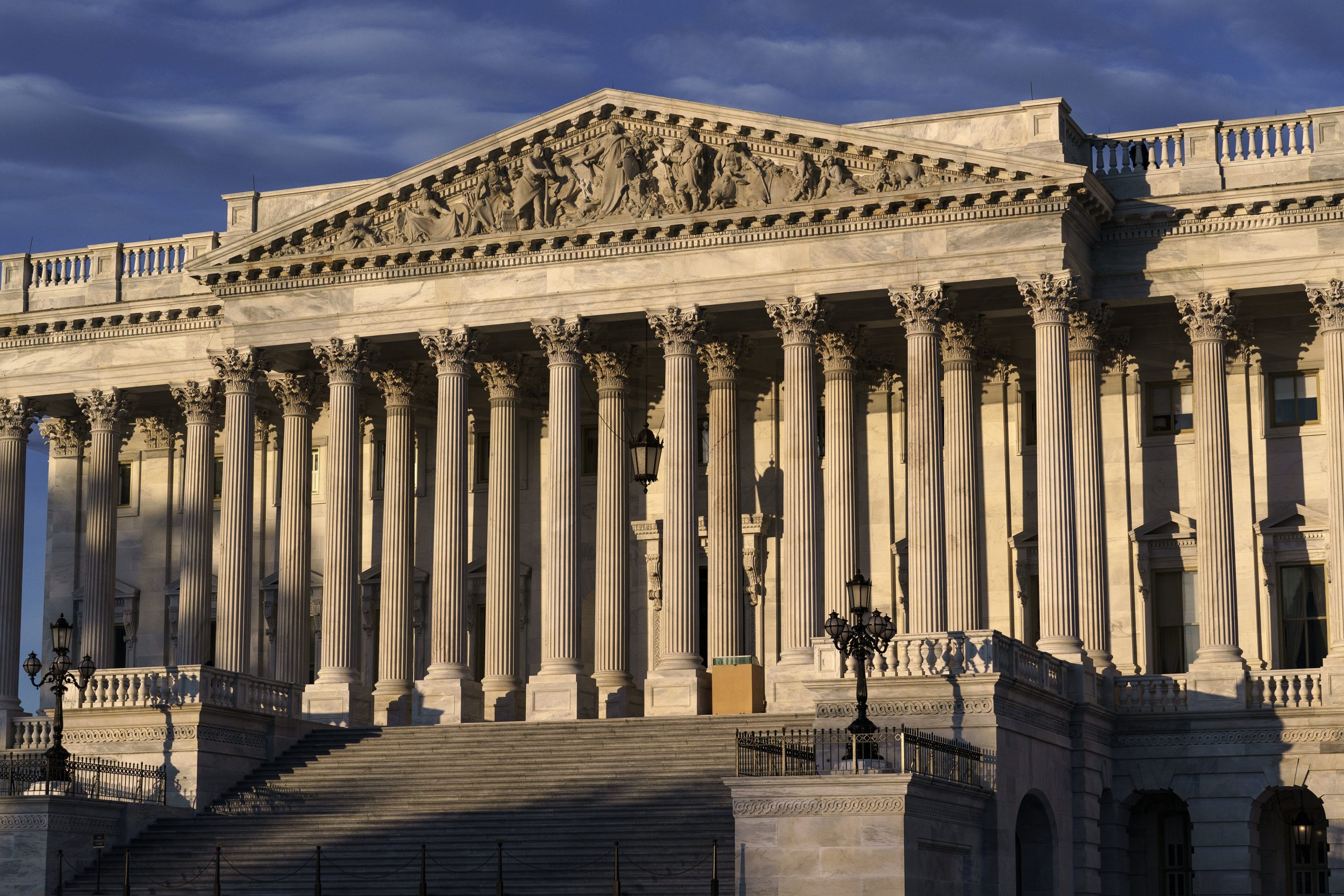
Democrats pushed Tuesday to cement control of the House for two more years with perhaps an even larger majority, banking on anxiety over the pandemic, suburban indignation with President Donald Trump and a fundraising advantage.
Posted Nov 04, 2020, 06:22AM EST
Democrats pushed Tuesday to cement control of the House for two more years with perhaps an even larger majority, banking on anxiety over the pandemic, suburban indignation with President Donald Trump and a fundraising advantage.
Early results weren’t conclusive in heatedly contested districts from New York and Virginia to Texas and Arizona. But in one noteworthy but unsurprising finish, Marjorie Taylor Greene, who has espoused unfounded QAnon conspiracy theories, won a vacant seat from an overwhelmingly Republican district in northwest Georgia.
Greene, whom Trump has called a “future Republican star,” has alleged an “Islamic invasion” of government offices and expressed other racist views. QAnon asserts that Trump is quietly waging a battle against pedophiles in the federal bureaucracy and Democratic Party. Greene has since backtracked from her embrace of QAnon.
Scores of both parties’ incumbents from safe districts were easily reelected. Victors included the No. 3 House leaders of each party: Democrat James Clyburn of South Carolina and Republican Liz Cheney of Wyoming.
Republicans were hoping to oust some of the 29 Democrats in districts Trump won in 2016, mostly freshmen, in districts ranging from upstate New York to rural New Mexico.
But nearly all Democratic incumbents in potentially vulnerable districts were outspending their GOP challengers, often by vast margins. Democrats were also aiming millions at Republican-held seats from areas around Atlanta, Dallas, Houston and Indianapolis, and even GOP strongholds like Little Rock, Arkansas, western Colorado and Alaska.
Both parties’ operatives agreed that the GOP was mostly playing defence and would be fortunate to limit Democratic gains to a modest single digits. Democrats control the House 232-197, with five open seats and one independent. It takes 218 seats to control the chamber.
Hanging over the contests were the coronavirus pandemic and the wounded economy, which voters ranked as top concerns, according to AP VoteCast, a national survey of the electorate. The virus has killed 232,000 people in the U.S. and cases are rising in nearly every state, while millions have lost jobs.
Should Democrat Joe Biden defeat Trump and Democrats win the Senate majority, the party would fully control the White House and Congress for only the second time since 1995. They last held the presidency, Senate and House in 2009 and 2010, the first two years of Barack Obama’s presidency.
A larger Democratic majority would make it easier for House Speaker Nancy Pelosi, D-Calif., to pass party priorities that include expanding health care coverage and creating jobs with new infrastructure projects. After a two-year run as one of her party’s most effective counterpoints to Trump, the 80-year-old Pelosi is all but certain to serve two more years running the House.
On an Election Day conference call, Pelosi expressed certainty that Democrats will “solidly hold the House.”
A handful of outspoken progressives from safe Democratic districts in New York and elsewhere are assured of winning their elections, making intraparty showdowns likely about how aggressively to pursue a liberal agenda. Even so, moderates seem certain to outnumber the progressives.
For Republicans, a failure to move significantly toward retaking the House – let alone losing seats – would trigger a reckoning about why they remain trapped in the chamber’s minority. A major question would be how to regain suburban voters who have fled the GOP in droves, largely in reaction to Trump’s embrace of racially insensitive appeals, frequent reliance on falsehoods and policies on immigration and social justice that many moderates view as harsh.
As in 2018 when they grabbed House control, Democratic ads emphasized pledges to make health care more accessible, preserve coverage for pre-existing conditions and shield voters from Republicans out to terminate those requirements. Many Republicans say they want to dismantle Obama’s health care law while retaining its coverage for pre-existing conditions, but they’ve not presented a detailed proposal for doing that.
The pandemic has only amplified Democrats’ focus on health care. Trump’s repeated false statements downplaying the virus’ severity have also given Democrats political fodder.
Another GOP disadvantage was that they were defending 35 open seats of lawmakers who didn’t seek reelection, resigned or lost party primaries. There were just 13 Democratic-held vacant seats caused by departures, including one death _ Georgia Rep. John Lewis, the civil rights hero.
This year’s House elections were projected to cost a record $7.3 billion in spending by candidates’ campaigns and outside groups, according to an estimate by the nonpartisan Center for Responsive Politics. By mid-October, candidates’ campaigns alone had reported raising $1.7 billion, another record.
Unfortunately for the GOP, the money wasn’t evenly distributed.
All 29 House Democrats in districts that Trump carried in 2016 outraised their GOP challengers, according to an Associated Press analysis of Federal Election Commission reports covering campaign finance through mid-October. In 19 of those races, the Democrats’ edge was 2-1 or more.
The imbalance was nearly as stark among the 42 Democrats who party leaders dubbed “Frontliners” because they seemed vulnerable, qualifying them for extra campaign help. Of that group, 40 amassed more money than their Republican opponent, including 26 who stockpiled at least double their amount.
In contrast, of the 53 Democratic seats that Republican leaders named as takeover targets, Democrats raised more money in 49 races.
Democrats even had an advantage, though less so, among the 37 GOP-held seats they picked as offensive targets. Though most of these seats are held by Republican incumbents, Democratic challengers outraised their GOP rivals in 21 races.
Looking to offset the imbalance, outside GOP groups like the National Republican Congressional Committee and the Congressional Leadership Fund poured millions into tight races in New York, Texas, Georgia, California, Florida and elsewhere.
But the Democratic Congressional Campaign Committee and the party’s House Majority PAC responded in kind, often leaving such spending closely matched.
Should Democrats retain the House majority, it would mark only the second time in a quarter century that they’ve controlled the chamber for two consecutive two-year Congresses. The first period ran from 2007 through 2010, Pelosi’s initial run as speaker.





